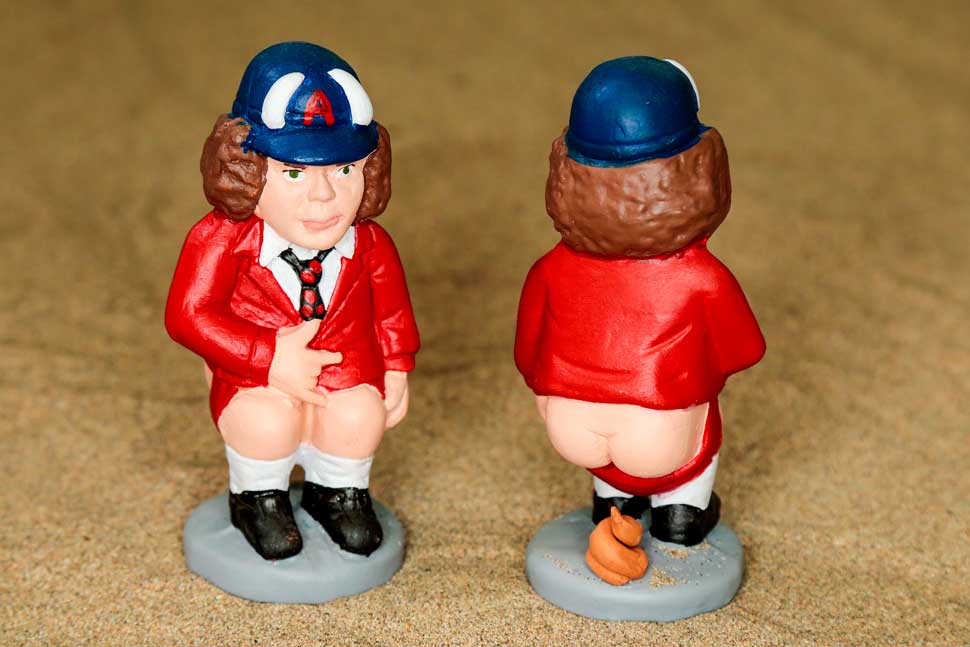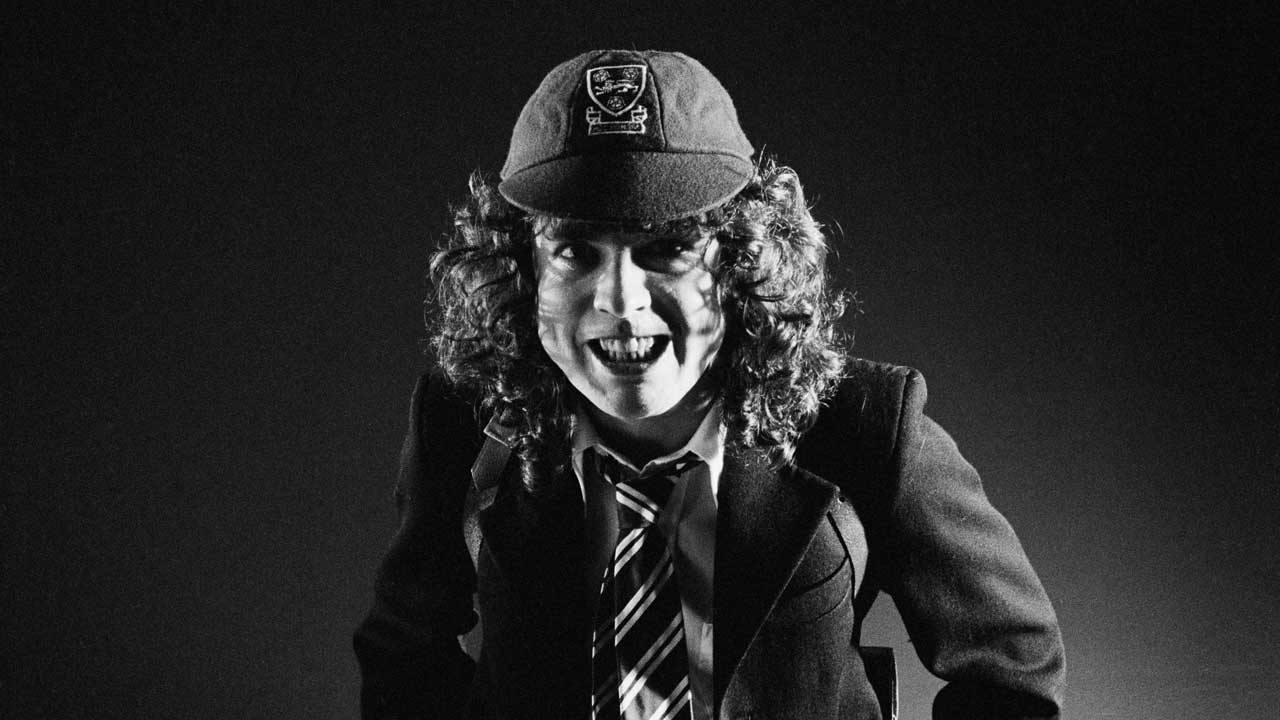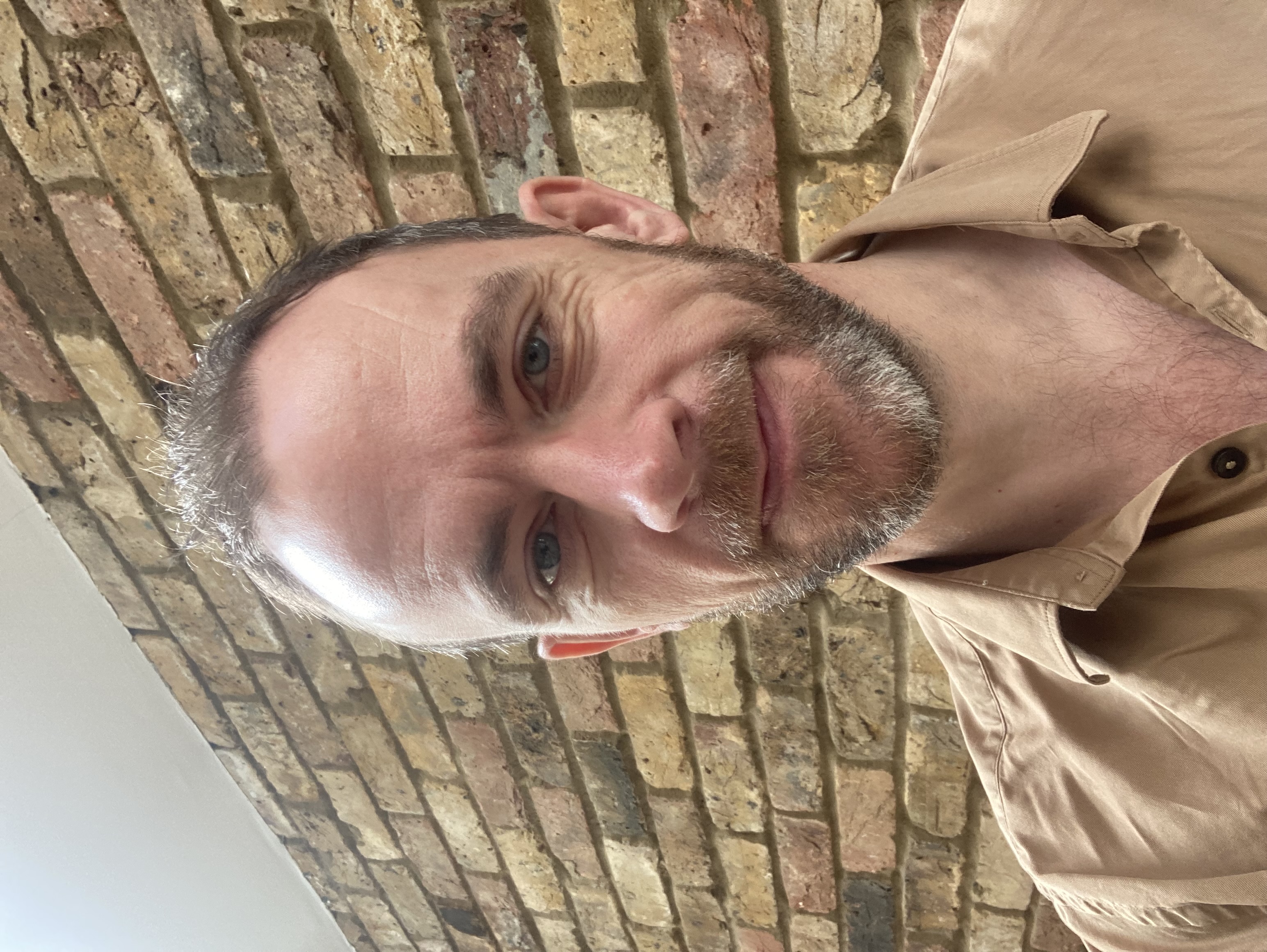If you ever had the pleasure of interviewing AC/DC’s founding brothers Angus and the late Malcolm Young, you would have found that their taste in other people’s music was every bit as no-frills as the riff-rhythm-n-rasp approach they preferred when making their own. This might suggest they would be squarely averse to showbiz frippery, publicity stunts and image-making detracting attention from the undeniable primal thrill of high voltage rock’n’roll.
That wasn’t the case when they started out back in 1973, though. Keen to get noticed, the Young brothers quickly recognised that their livewire lead guitarist was a natural focus of attention, but, as older sister Margaret wisely told them: “You need a gimmick.” She’d been the one who had suggested the band’s name, after seeing the warning notice on a sewing machine, so she had a good track record where advice was concerned.
Malcolm Young was ruthlessly ambitious and keen to emulate his older brother George’s success with the Easybeats in the 60s. He had already sacked two of the band within the first six months of their existence, and with glam rock sweeping the charts Down Under as well as in the UK, he wasn’t about to let his new band lag behind the times. He set about dressing each member of the band in individual costumes, even though, according to Mick Wall’s band biog Hell Ain’t A Bad Place To Be, Angus was wary of them looking like a cabaret act.
Malcolm opted for an airman’s jump suit, bassist Rob Bailey wore a New York cop’s outfit, drummer Peter Clack was in a harlequin costume and frontman Dave Evans went full-on glam rock peacock. Angus, meanwhile, was persuaded to wear his school uniform, replete with satchel strapped across his back.
Margaret remembered seeing him in a few years before not bothering to change out of his school uniform before picking up a guitar and jamming with his mates, and the image clearly stuck. She lent Angus her son’s Ashfield Boys High uniform and off he went.
When AC/DC debuted the look at an outdoor festival in Sydney’s Victoria Park in April 1974, Evans remembers it galvanising young Angus: “He really ripped up the stage. He went berserk,” he told Wall.
Either side of this, Angus would experiment with other looks, including a ‘Super-Ang’ costume, a gorilla suit, a black and white convict outfit and a Zorro mask, but it was the schoolboy look that seemed to suit the diminutive teenager best.
The band would even shave a few years off Angus’s age in press interviews to make out he was still young enough to actually still be at school, such was the curiosity about the look.
After 1974, of course, the rest of the band quickly ditched the Aussie Village People look and changed back into their civvies (unless you count Bon Scott’s penchant for donning a kilt from time to time). But Angus’s uniform is now such an iconic part of not just the band’s story but rock history in general that it could probably walk out and duckwalk its way across the stage on its own. May it never reach graduation.


